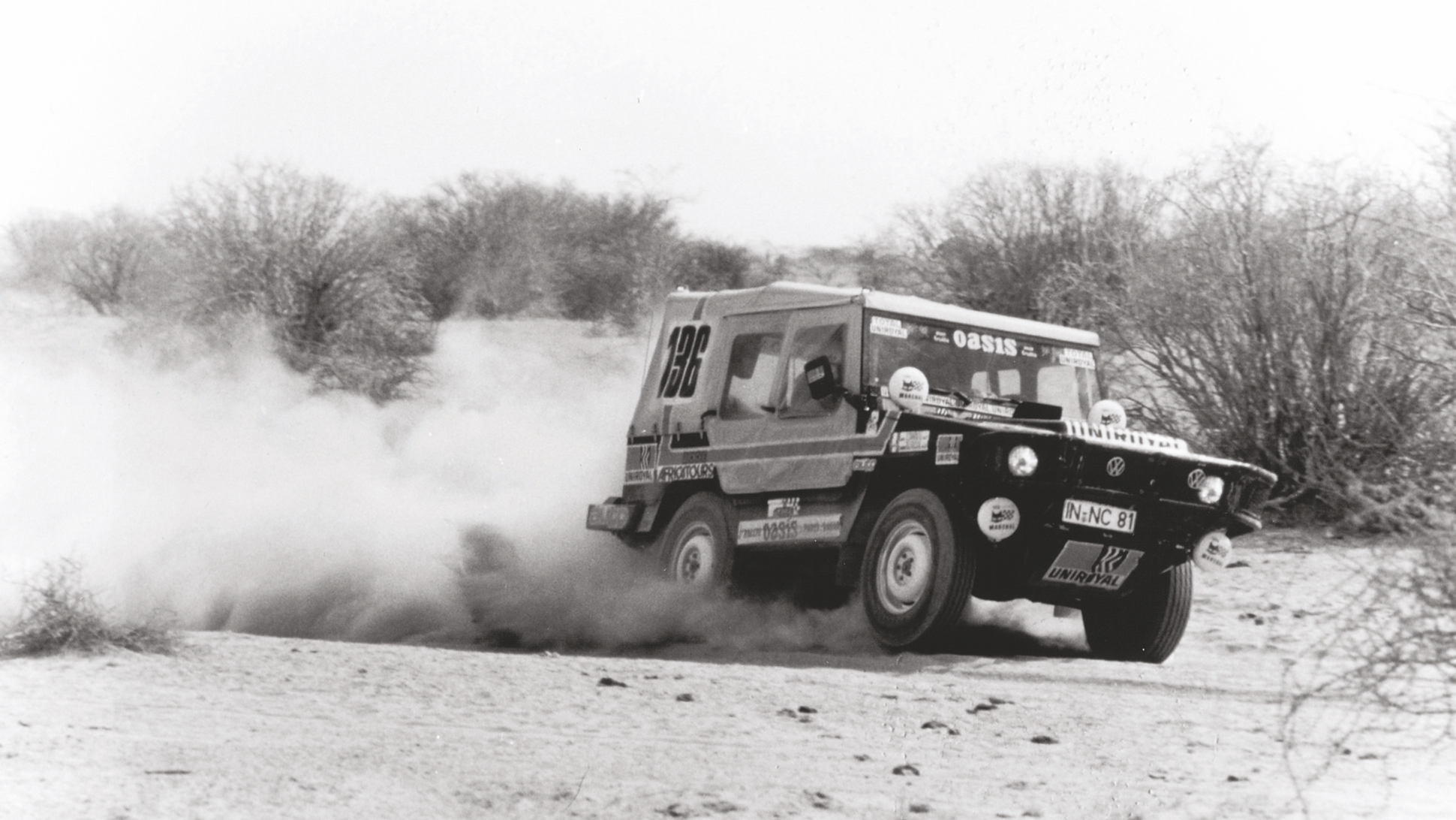

The Volkswagen Iltis may be one of the most influential rally cars you’ve never heard of, even though it wasn’t really modified all that much to go rallying. Volkswagen wanted to sell them to the French military, and it knew just the place to make that pitch: the Paris-Dakar Rally.
The Volkswagen Iltis was a beefy four-wheel-drive utility vehicle that went into production in 1978, and according to the company’s brief history of the vehicle, it was co-designed with Audi as a bit of a parts-bin king. The overall design was based based heavily on the existing DKW Munga that Audi had been building since the sixties, but Ferdinand Piëch’s design team also used parts from other Audis, the Mk1 Golf and the Volkswagen Beetle.

As Audi had built the Munga, they picked up production and development at their plant in Ingolstadt, even though it was branded as a VW.
Just over 9,000 Iltises were built in total, giving it a smaller production run than the Lamborghini Aventador, but hey, the Iltis was a pretty pricey, niche vehicle. While it was sold to both militaries and civilians alike, VW was heavy on the military sales for this one—so much so that it went to extraordinary lengths to catch the French military’s eyes (and pocketbook).

The Paris-Dakar Rally was new for 1979, and at the time, still actually ran from Paris, France, to Dakar, Senegal. It was the ultimate feat for an off-road vehicle to not only make that trek, but do well. So, in hopes of generating buzz with civilian and military buyers alike—especially those close to the rally’s starting line—Volkswagen entered the second-ever Paris-Dakar Rally in 1980 with four Audi-prepped Iltises.
Paris-Dakar Rally vehicles then were much closer to stock as opposed to the purpose-built racers we see today, making this the best showcase VW could have asked for. There were no support vehicles and mechanics at stops, either. Your vehicle made it, or it didn’t. According to Patrick Zaniroli, who drove one of the Iltises, the Iltis was even less modified than most 1980 entrants, with its only modifications being a larger carburetor and a different camshaft.
Like its VW-branded predecessor, the VW Thing, the Iltis wasn’t especially powerful, sporting a 1,741-cc engine that made 70 horsepower, or 75 hp if you used premium fuel. But it had a four-speed manual transmission with an extra low-gear, and that was paired with a mechanical four-wheel-drive system. The system allowed the Iltis to power only the rear wheels until all four were needed, at which point the driver could engage the four-wheel-drive system. Other competitors were faster, but the Iltis was tougher and more reliable.
All four Iltises finished the 1980 Paris-Dakar Rally, with the one driven by Freddy Kottulinsky and Gerd Löffelmann coming in first place. The others didn’t do bad, either, finishing second, fourth and ninth in a field where 25% of the vehicles didn’t even finish according to Eurosport.
The winning buzz boosted Iltis sales for a couple more years of life, but it was simply too pricey for the civilian market in the end. The French armed forces never adopted the Iltis, either. The French army wanted a replacement for their Hotchkiss Jeeps in the seventies, but none of the French manufacturers had anything ready to go, according to Ran When Parked. So, Citroën teamed up with VW to make a CX-powered Iltis called the Citroën C44. A C44 also ran in the Paris-Dakar Rally the year after VW won in the Iltis, but the C44 failed to finish. Unfortuantely, that VW-Citroën project ultimately got passed up for a Peugeot-engined Mercedes G-Wagen called the Peugeot P4.
Production of the Iltis continued in small numbers through the 1980s in Europe and under license elsewhere (such as to Bombardier, who made them for the Canadian military), but Ingolstadt stopped building Iltises by 1982.
The Iltis’s biggest achievement wasn’t even in an Iltis, though. Audi was using an Iltis as a support vehicle for snow testing only to realize that four-wheel-drive worked really well there. They then adapted the system for use in road cars, called it Quattro and the rest is history.

The Audi Sport Quattro was so dominant in top-level Group B stage rally that it pushed the adoption of all-wheel-drive across the field. Its roadgoing Quattro counterparts helped make all-wheel-drive a hit for regular drivers who wanted more control in foul weather. So, thank the VW Iltis the next time you’re shopping for an all-wheel-drive winter beater.
Got a tip? Send us a note: tips@thedrive.com